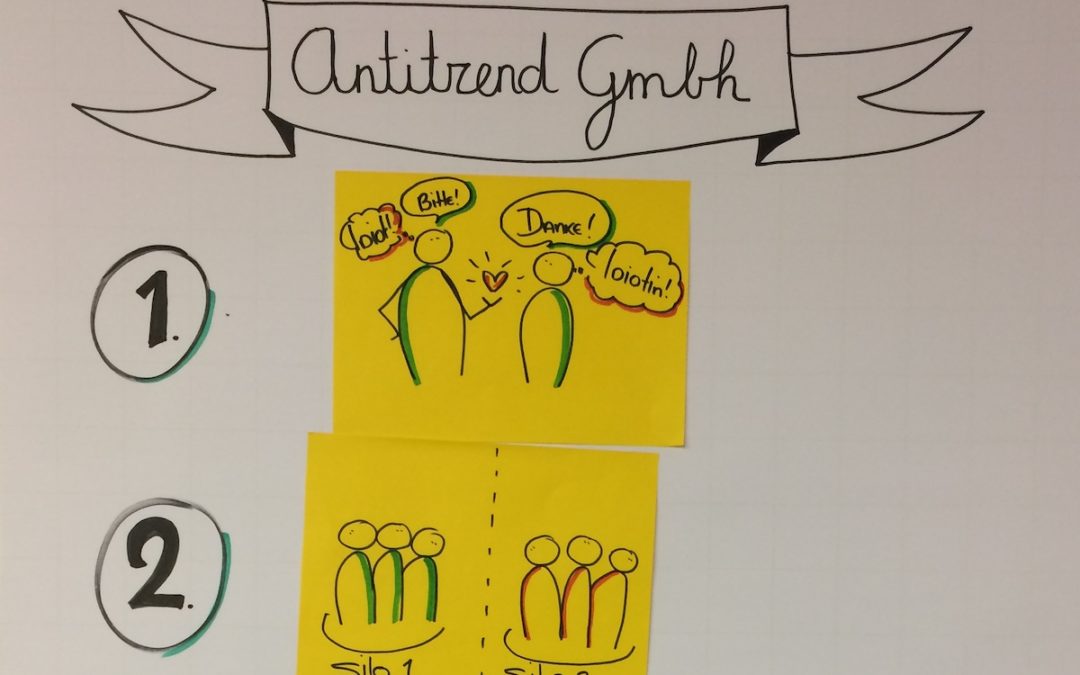Future of Work, also called New Work – that means working independently and exchanging ideas with colleagues in a network of sparring partners. But also the constant striving for meaningfulness is part of it. The representatives of New Work want freedom of action in what they do. They demand autonomous or collaborative decision making processes.
The past New Work Berlin Meetups have already provided us with a lot of input in this regard, and in fact it is largely clear to us what we need to do to come closer to this vision in our own working environment. Well, technically. When it comes to changing our workplace, we also depend on our surrounding and the people we work with. A basic common understanding of where to start, who to work with and how, is essential. However, as with any change process, we have to make sure that the people involved are taken along on the journey towards the future workplace.
Despite all our efforts and the basic knowledge of what New Work means in theory, we often encounter entrenched processes. These include, above all, decisions and behavior patterns that make us work inefficiently and, let’s be honest, simply annoy us now and then.
This is how we identified the anti-trends
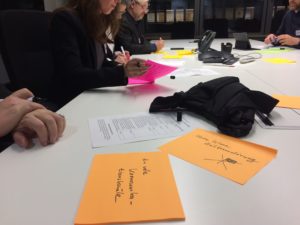
Each person writes down 1-3 experiences.
The turn of the year offers an excellent opportunity for reflection. That’s why we dedicated our last meetup to toxic processes, decisions and behaviors. In four groups, a total of over 40 New Work enthusiasts and other interested people spoke about the working conditions that disturbed them most last year. Each team also decided how they would present their selected issues to the other groups.
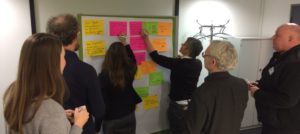
Each team chose the four best experiences and created a story out of them.
Particularly interesting was the affirmative response of many participants when individual team members described their complaints during the group work. Obviously, many companies are more similar in the way they work than one might think.
Four anti-trend stories
As a result, there were four sensationally entertaining stories, which brought disturbing working methods to the point in a humorous way. Hand on your heart – do you recognize yourself and your company?
1. Aimless agility
The management of a company has the quickly ordered but short-sighted idea of bringing agility into the company. But unfortunately a clear definition of what agility actually means in detail and what it is necessary for is missing. The non-existent objective is accompanied by a lack of standards for communication and transparency: “Decide in a self-organized way for a suitable communication medium!” There are no responsible persons and no training. Instead, there is only the expectation ” at the end of the year we will work agile” – no matter how this affects us, our colleagues or customers and what it actually means for us and our processes. This leads to never-ending chaos.
2. HR Talk by Hilke – a simulated TV talk show
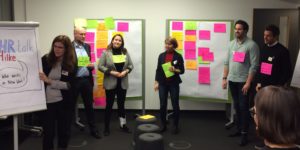
In this company there is an invisible wall between the employees.
In this company, different employees with unequal needs clash: Those New Work fans who rely on self-organized work, freedom of action and collaboration. But also those who only want to silently work on their own tasks, prefer to play table tennis at home rather than in the office and neglect New Work as an opportunity for a more efficient and satisfied working environment or culture. For them all this hype about alternative forms of work is somewhat disturbing. The two groups need to get along, but end up in deep conflicts and internal struggles. How can such diverse people manage to break down the walls between each other? Is it possible to create a better working world for both sides through exchange? The story ended with these questions.
3. We make things worse for you – the Anti-Trend Consulting Inc.
A management consultancy uses its own example to show other companies how lack of communication, absence of transparency and poor processes can create lasting inefficiencies. No matter whether one works together in an agile way, in silos or in very rigid structures. They offered many answers to the question: “How can destroy every innovation before the change process even started?”
The tip of the consultancy: pointless processes with long coordination loops create enough work, so that finally there is no more room for innovative work and further training.
4. Generation conflicts – history lessons from the year 2069
What will the people of the future think about the way we work today? In the year 2069, 15-year-old Frank lets his grandparents explain dusty vocabulary like micromanagement and mistrust culture. He wonders what it means not to receive any appreciation. “Not being scolded is enough appreciation” – this is the attitude towards work in his grandfather’s time.
Anti-trends and proposed solutions for a better working world
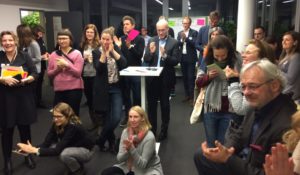
So? What do you say? Did some of the made-up stories remind you of your own working environment? Are you familiar with one or the other topic and wondering how to tackle the challenges mentioned?
After the individual presentations, we all debated together about proposed solutions. This resulted in numerous and diverse ideas. In the following list we have recorded the complete pool of problems and ideas for you from A to Z:
| Anti-Trend | Solution Proposal |
| Aimless agility |
|
| Buzzword Bingo instead of change |
|
| Cooperation is blocked |
|
| Culture of distrust |
|
| Focus on numbers instead of employees |
|
| Micromanagement |
|
| Poor communication |
|
| Infinite coordination loops |
|
| Lack of liabilities |
|
| Limited leadership communication |
|
| No appreciation |
|
| No time for innovation |
|
| Poor communication |
|
| Team conflicts |
|
| Thinking and acting in silos instead of cooperation |
|
| Unclear goals and targets |
|
In one advice, by the way, everyone agreed in all four cases: define goals together. Only if everyone knows in which direction work is being done, can you align your own working methods and your field of work to these goals.
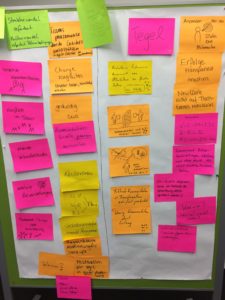
Nothing is unsolvable: the audience had several suggestions for solutions to each problem.
The solution approaches, which were collected by post-its during the workshop, could be discussed extensively afterwards in personal networking. If we want to make a difference, we have to actively address change, engage in a communicative exchange with our colleagues and rethink dusty processes. So everyone went home with a lot of inspiration at the end of the evening.
We hope that we can inspire all participants and you as a reader to change and shape the future working world for the better. We would like to thank all the teams as well as Sopra Steria for providing the rooms and the good cooperation during the workshops
Are you already thinking about the conflict that arises when you introduce the topic of change in your conversations with colleagues? Then we recommend to research more about conflict as a driver of innovation in modern organizations. Our next Meetup will focus on that topic.
At the end you will get some great impressions of our Meetup in the following video by Dagmar Ege .
Our guest authors
 Conny Grünbaum is mainly responsible for personnel recruitment at the IT consultant Assecor. In an industry in which the lack of skilled workers is clearly noticeable, she regularly has to reflect what an attractive working environment for employees should look like and how it can be implemented for the company. What she values most about working in her company is the autonomy and freedom of decision that she enjoys for her tasks.
Conny Grünbaum is mainly responsible for personnel recruitment at the IT consultant Assecor. In an industry in which the lack of skilled workers is clearly noticeable, she regularly has to reflect what an attractive working environment for employees should look like and how it can be implemented for the company. What she values most about working in her company is the autonomy and freedom of decision that she enjoys for her tasks.

Foto von studioafraz.com
Jens Hündling is a freelance trainer and coach for digital transformation and new work. As a former IT executive, he prefers to communicate with people rather than machines. Jens is passionate about developing teams and organizations. Especially with East Frisian humor. More about him at https://dr-huendling.de

